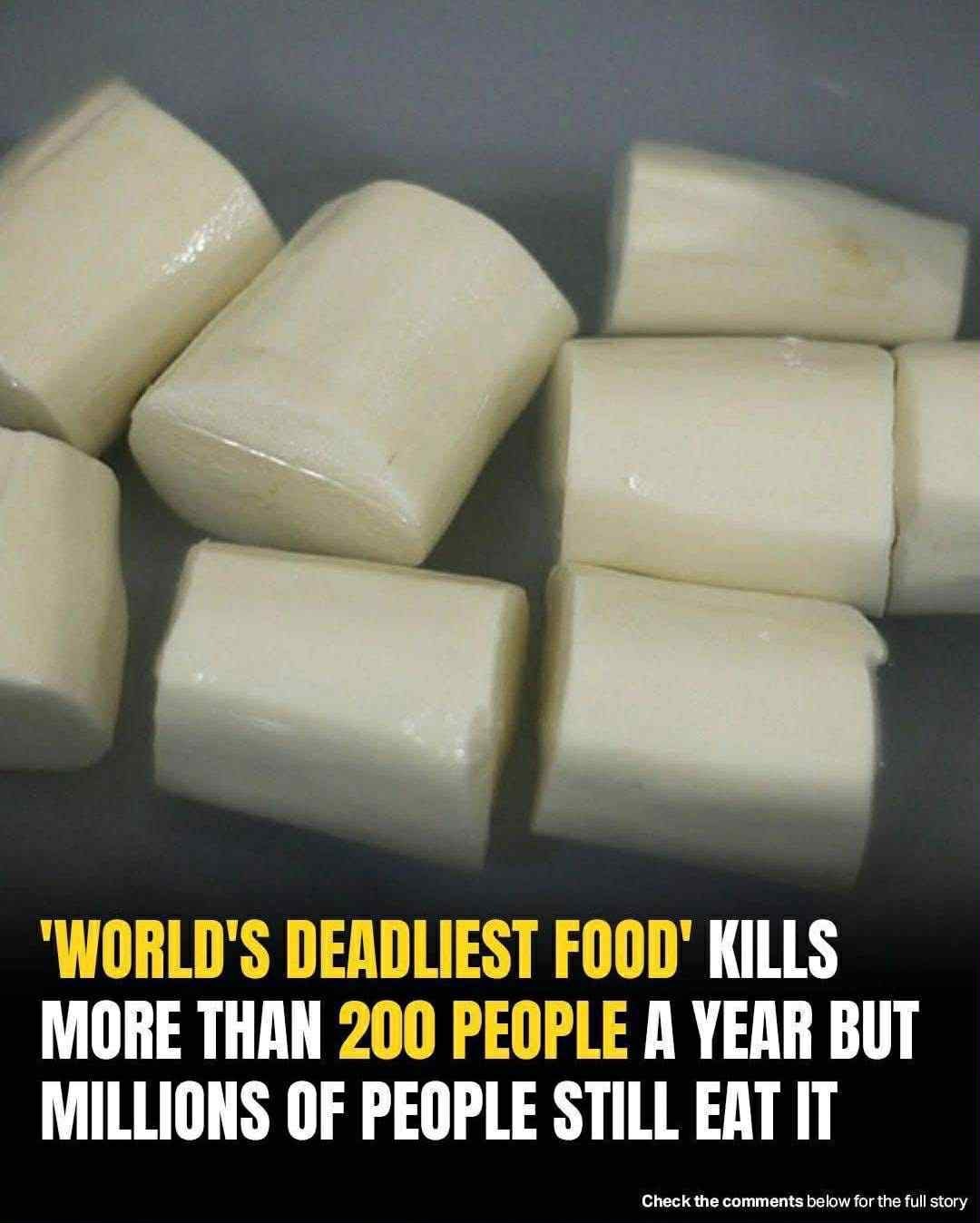When it comes to making decisions about the food we eat, it’s essential to consider not just taste and nutrition but also potential risks to our health. While most of us focus on eating a balanced diet filled with a variety of fruits, vegetables, proteins, and grains to maintain good health, there are certain foods that, while widely consumed, can pose serious health hazards if not properly prepared.

One such food is cassava, a root vegetable that has been labeled “the world’s deadliest food,” despite being a dietary staple for hundreds of millions of people. Cassava, native to Central and South America, is similar in use to potatoes and is particularly popular in tropical regions around the globe. It is rich in nutrients like Vitamin C and copper, and it serves as a critical food source in many developing countries due to its ability to grow in poor soil and dry conditions. Nigeria, Thailand, and Indonesia are among the top producers of cassava, and globally, it is estimated that over 500 million people consume it regularly. Despite its popularity and role in global food security, cassava has a dangerous side. According to the World Health Organization (WHO), around 200 people die each year as a result of consuming cassava, primarily due to the presence of naturally occurring toxic compounds in the plant.
Cassava contains cyanogenic glucosides, which are chemical compounds that can release cyanide when the plant tissue is damaged—such as when the root is peeled or chewed. These compounds act as a natural defense mechanism to protect the plant from animals and pests, but when humans consume cassava that has not been properly prepared, it can result in cyanide poisoning. The WHO warns that high dietary exposure to cyanide from cassava occurs when the vegetable is not processed correctly. This risk increases significantly during periods of famine or war, when people may resort to eating raw or improperly prepared cassava due to food scarcity. In such cases, individuals may suffer from acute cyanide poisoning, which can be fatal.
Long-term exposure to lower levels of cyanide is also linked to several serious health conditions, including konzo, a neurological disease that causes irreversible paralysis in the legs. Konzo, which is most often seen in extremely impoverished communities, occurs after the consumption of bitter cassava in combination with a low-protein diet. While it most commonly presents in epidemic outbreaks, sporadic cases continue to be reported. The fact that this severe and disabling condition stems from something as seemingly harmless as a root vegetable underscores the importance of proper food preparation. Fortunately, cassava can be made safe to eat through traditional processing methods that significantly reduce the levels of cyanide.
Soaking peeled cassava in water for at least 24 hours before cooking, followed by boiling or drying it in the sun, helps break down the toxic compounds. These practices have been passed down for generations in many cultures that rely heavily on cassava as a food source. When prepared and consumed correctly and in moderation, cassava can be a valuable part of a nutritious diet. It provides a good source of carbohydrates and fiber and contains important vitamins and minerals that support overall health. In many parts of the world, cassava is a lifeline for communities facing food insecurity, offering sustenance in harsh growing conditions where other crops might fail. However, its potential dangers should not be overlooked. Raising awareness about the risks associated with improperly prepared cassava and educating communities about safe processing techniques is crucial to preventing illness and saving lives. In conclusion, cassava is a food that represents both nourishment and danger. It plays an essential role in feeding millions, especially in developing regions, yet it carries the potential to cause serious harm if not treated with the respect and care it requires. The title of “the world’s deadliest food” may sound dramatic, but when nearly 200 lives are lost each year to a preventable cause, it becomes clear that awareness, education, and proper preparation are key to making cassava a safe and sustainable part of the global diet.





